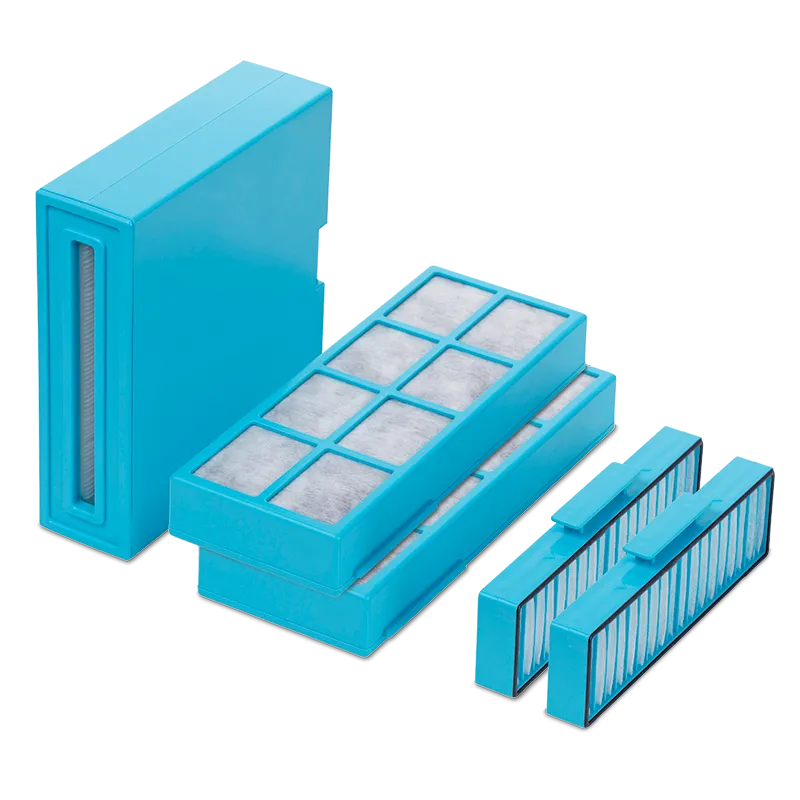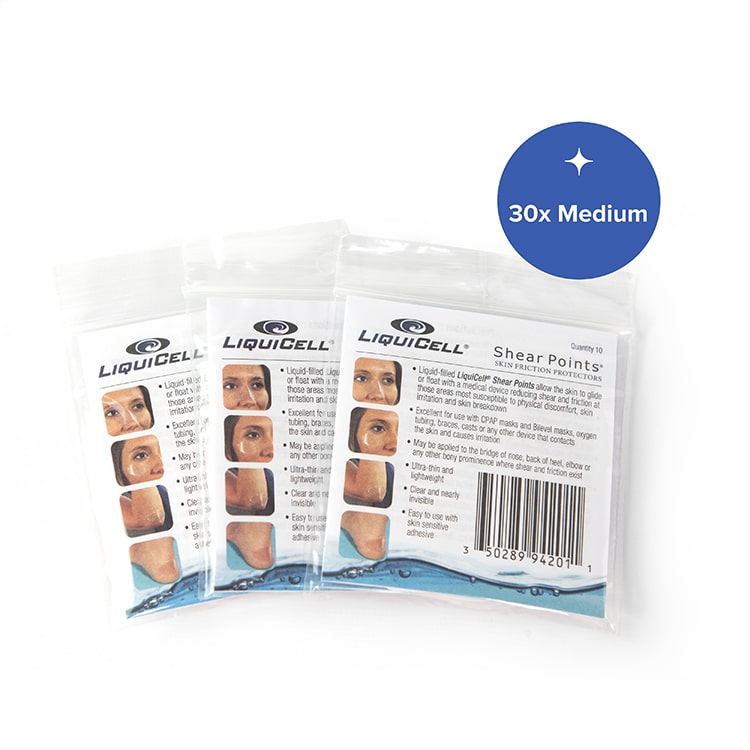Indoor Air Quality
There are many factors that can influence indoor air quality. The classes of pollutants that lead to poor indoor air quality are often the same as outdoor pollutants. Particulate matter that consists of small particles invisible to the naked eye can end up deeply inhaled in the lungs, leading to health consequences. Volatile organic compounds, carbon monoxide, and mold spores and other contaminants can reach elevated levels indoors.
SoClean 3-Stage Air Purifier+
Tips for Improving Indoor Air Quality
Volatile organic compounds may be more concentrated indoors, as solvents from paints, furniture foams, and cleaning products are being emitted in enclosed spaces with nowhere to go. Carbon monoxide from furnaces that are not ventilating their waste gases correctly can actually reach fatal concentrations, which is why many municipalities mandate carbon monoxide detectors.1 Black mold, which grows in high moisture environments, can become concentrated in homes.
Indoor air quality can be improved with a number of measures. When using harsh cleaning products or paints, opening windows will allow the volatile organic compounds to ventilate to the outdoors. Furnaces and heaters should be well maintained.
To reduce the prevalence of black mold, particular care should be taken in regards to moisture levels. Any signs of moisture problems should be addressed promptly. A leaking pipe can provide the perfect amount of moisture for mold to grow out of control in the walls, floors, and ceilings. Incorrectly installed insulation can actually result in increased moisture as warm, moist air meets with cold air. The moisture that condenses out into the insulation is perfect for mold growth. Dehumidifiers and vapor barriers are important methods for reducing unwanted moisture.2
In addition to reducing sources of the pollutants that cause poor indoor air quality, actively removing pollutants will improve air quality. An air purifier for home use can greatly improve indoor air quality. An air purifier benefits the people that occupy a space by removing pollutants from the air.
SoClean 3-Stage Air Purifier+
Shop NowFiltering Indoor Air
Although our lungs have methods of removing a lot of the particulate matter that has been inhaled, our systems can become overwhelmed. In addition, some particulate matter is too fine to be effectively cleared by our lung’s defenses. Volatile organic compounds, such as benzene, are easily absorbed into the bloodstream when inhaled, leading to a number of negative health outcomes, including cancer.3
This is why it is a good idea to invest in some type of air filtration system. Homeowners may be able to ensure that their HVAC air filtering system is well-maintained. If there isn’t a practical way to make use of an integrated HVAC air filter, an air purifier for room use can be used to get the benefits of air purification. These are stand-alone devices which are rated according to the size of the room they are able to treat reliably. Using an air filter that is too small for the room it occupies will provide some benefit, but may not be able to consistently keep the air clear of pollutants.
More Products from SoClean
SoClean Air Purifier+ Filter Kit
$149
Portable Outlet CPAP Backup Battery V2
Save $50!
New and improved model - when the power goes out, your CPAP stays on!
Just plug the new Portable Outlet UPS between your CPAP equipment and your bedside wall socket to protect from loss of power due to storms or outages.
$349
LiquiCell Shear Points, 30 Skin Friction Protectors, Medium
Great for use anywhere skin would benefit from cushioning and protection. Ultra-thin, liquid-filled strips protect skin and stay in place.
FSA/HSA eligible LiquiCell Shear Points are latex-free, ultrathin, clear liquid-filled membranes that provide a synthetic, external cushion. It reduces painful friction by allowing an object to glide or float over the skin. Gentle skin adhesive keeps LiquiCell Shear Points securely in place overnight, while allowing easy and painless removal in the morning.
Medium, 30 per box, each 2.75" wide by 1.3" high
Also available: Small (30 per box, each 2.2" wide by 1.1" high) LiquiCell Shear Points are excellent for use on the bridge of the nose to reduce irritation from sleep equipment such as face masks.
$19.95
FAQs
Indoor air quality is negatively affected by sources of indoor air pollution. These sources include paints and cleaning materials, furnaces, and even cooking food. Although manufacturers have begun to release products that release lower amounts of VOCs, the tradeoff may be that they release these compounds more slowly. This means that simply airing out a room after painting it may not be sufficient to lower indoor VOCs. Indoor air quality can be improved with an air purifier.
The Air Quality Index (AQI) at which it is safe to open windows may depend on how sensitive you are to air pollution. The United States Environmental Protection Agency’s AQI guidelines indicate that for AQI numbers above 300, all groups should avoid exposure to outdoor air. The EPA considers an AQI below 50 to be safe for all groups. If the AQI falls between these two values, it may be safe to open windows to exchange indoor air with outdoor air, but some groups of people may be negatively affected by the outdoor air.
A well-made air filtration system or air purifier can improve indoor air quality significantly. A HEPA filter will remove at least 99.97% of airborne particles, which amounts to a three-thousand-fold reduction in airborne particulates.
Yes! Indoor air pollution can be dangerous. Carbon monoxide, also known as CO, from improperly installed or poorly maintained furnaces can actually be fatal. CO is scentless and tasteless, so concentrations can reach dangerous levels without being detected. Household paints and even the foam in furniture can emit volatile organic compounds that can be harmful to human health.
No. Boiling water on an electric stove will increase the amount of water vapor in the air, but will not provide any sort of purification. If the water is heated on a gas stove, the products of combustion from the burner will actually pollute the air with carbon monoxide and soot.
More Products from SoClean
SoClean 3
SoClean 3 is Sold Out. Be among the first to experience the new FDA-Cleared SoClean 3+, featuring best-in-class engineering and cutting-edge technology.
$398
Portable Outlet CPAP Backup Battery V2
Save $50!
New and improved model - when the power goes out, your CPAP stays on!
Just plug the new Portable Outlet UPS between your CPAP equipment and your bedside wall socket to protect from loss of power due to storms or outages.
$349
LiquiCell Shear Points, 30 Skin Friction Protectors, Medium
Great for use anywhere skin would benefit from cushioning and protection. Ultra-thin, liquid-filled strips protect skin and stay in place.
FSA/HSA eligible LiquiCell Shear Points are latex-free, ultrathin, clear liquid-filled membranes that provide a synthetic, external cushion. It reduces painful friction by allowing an object to glide or float over the skin. Gentle skin adhesive keeps LiquiCell Shear Points securely in place overnight, while allowing easy and painless removal in the morning.
Medium, 30 per box, each 2.75" wide by 1.3" high
Also available: Small (30 per box, each 2.2" wide by 1.1" high) LiquiCell Shear Points are excellent for use on the bridge of the nose to reduce irritation from sleep equipment such as face masks.
$19.95
Why SoClean
Get cleanroom quality clean air at home with the SoClean 3-Stage Air Purifier+. The SoClean 3-Stage Air Purifier+ removes 99.99999% of airborne viruses and bacteria. The SoClean 3-Stage Air Purifier+ greatly outperforms HEPA standards in a portable package that can be easily moved from place to place.
Master Air Purifier Sources:
Air quality sources: Air purification/filtration process sources: HEPA, UPLA, and MERV filter sources:
https://www.smu.edu.sg/sites/default/files/economics/shea2014/presentation/pollution_talk_april_2014_ham2.pdf
https://www.airnow.gov/aqi/aqi-basics/
https://www.ncbi.nlm.nih.gov/pmc/articles/PMC4484965/
https://www.sciencedirect.com/science/article/abs/pii/S0048969701007653
https://www.cfp.ca/content/57/8/881/tab-figures-datad1
https://ehp.niehs.nih.gov/doi/full/10.1289/ehp.1002255
https://www.gotopac.com/art-cr-iso-cleanroom-classifications
https://www.researchgate.net/publication/316472615_A_review_of_air_filtration_technologies_for_sustainable_and_healthy_building_ventilation
https://www.epa.gov/indoor-air-quality-iaq
https://www.airnow.gov/sites/default/files/2020-05/aqi-technical-assistance-document-sept2018.pdf
https://www.health.ny.gov/environmental/indoors/air/pmq_a.htm#:~:text=Exposure%20to%20fine%20particles%20can,as%20asthma%20and%20heart%20disease
https://www.epa.gov/sites/production/files/2018-07/documents/residential_air_cleaners_-_a_technical_summary_3rd_edition.pdf
https://www.ncbi.nlm.nih.gov/pmc/articles/PMC6272289/
https://link.springer.com/article/10.1007%2Fs100220100046
https://www.kompareit.com/homeandgarden/hvac-compare-central-air-cleaner-cost.html
https://www.chemviron.eu/products/activated-carbon/
https://www.who.int/occupational_health/publications/en/oehairbornedust3.pdf
https://academic.oup.com/jimb/article/32/7/319/5992784?login=true
https://www.cabotcorp.com/solutions/products-plus/activated-carbon
https://www.sciencedirect.com/science/article/abs/pii/S009167499970391X
https://www.tandfonline.com/doi/full/10.3109/02770903.2014.895011
https://www.ashrae.org/file%20library/about/position%20documents/filtration-and-air-cleaning-pd.pdf
https://www.britannica.com/science/human-respiratory-system/The-mechanics-of-breathing
https://www.epa.gov/pm-pollution/particulate-matter-pm-basics
https://www.merriam-webster.com/dictionary/HEPA
https://www.standards.doe.gov/standards-documents/3000/3020-astd-2015
https://www.standards.doe.gov/standards-documents/3000/3020-astd-2015/@@images/file
https://www.sciencedirect.com/science/article/abs/pii/S0195670105005074
https://www.ncbi.nlm.nih.gov/pmc/articles/PMC1477932/
https://pediatrics.aappublications.org/content/127/1/93.short
https://www.tandfonline.com/doi/full/10.1080/02786820500191348
https://www.sciencedirect.com/science/article/abs/pii/0360128583900023
https://onlinelibrary.wiley.com/doi/abs/10.1002/ajim.4700270302
https://www.laboratory-supply.net/blog/difference-between-a-hepa-and-ulpa-filter/
https://www.sciencedirect.com/science/article/abs/pii/S0360132320305588
https://www.karger.com/Article/Abstract/151502
https://www.grainger.com/know-how/equipment-information/kh-what-is-merv-rating-air-filter-rating-chart
https://www3.epa.gov/ttn/catc/dir1/ff-hepa.pdf
https://www.epa.gov/indoor-air-quality-iaq/what-merv-rating-1
ttp://gttlab.com/uploads/soft/161025/EN1822-5-2009Highefficiencyairfilters(EPA,HEPAandULPA)Part5Determiningtheefficiencyoffilterelements.pdf
Sources:
- https://www.ncsl.org/research/environment-and-natural-resources/carbon-monoxide-detectors-state-statutes.aspx#:~:text=Beginning%20in%20January%202016%2C%20carbon,as%20a%20byproduct%20of%20combustion.
- https://web.ornl.gov/sci/buildings/2016/docs/presentations/principles/principles-04/Principles04_Paper109_Saber.pdf
- https://www.annualreviews.org/doi/abs/10.1146/annurev-physiol-021014-071931











